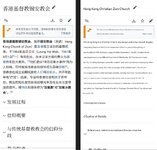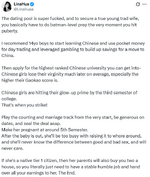The branch thing is similar in some European countries, for example France. I think in China though things might have changed, in that a lot of the financial transactions can be handled thought the main apps.
So you also do not know how the Chinese banking and monetary systems work, but with one infographic about inflation did you jump to the conclusion about what it is and that it is fundamentally different from the Western one?
There is a lot of knowledge about how things work at the highest levels of the West, such as the banking and monetary systems, as well as the interactions between the West & East / Capitalist & Communists, that are known only because of a few people and the research they did in the 20th century.
Norman Dodd revealed how tax-free trusts, like the Ford Foundation, were used for money laundering and actively pursuing the radical reformation of Western society at every level when he worked for the
Reese Committee. He worked in that subversive system, beginning as a banker, and was, as a forerunner to the
Church Committee that exposed the CIA and other crimes in the early 1970's, a kind of whistle blower, but he also did a lifetime of research to understand what he'd gotten himself into.
Antony Sutton researched how the West transferred wealth and technology to the Soviet Union, without which they would not have been able to even pretend to have been a competitor or threat. He published
several excellent books documenting what occurred.
Eustace Mullins spent years of research when he worked in the Library of Congress in order to expose the Federal Reserve as a private banking cartel in his books, which cost him his job and much more. Everyone who came after, like G. Edward Griffin, was standing on the shoulders of this giant in order to talk about the Western central banking model, International Bank of Settlements, etc.
Carroll Quigley was a Georgetown Univ. professor who taught the US Foreign Service and was mentor to Pres. Bill Clinton, and it was Quigley who exposed the 19th century, secret society roots of the political system of subversion and control that we live in today, which emanated from freemasonic circles in The City of London banking establishment. He demonstrated this in his two books,
Tragedy & Hope and
The Anglo-American Establishment, because he was proud of it and was tasked as its historian by the umbrella organization fronting for the Satanic secret societies that organized the world that we live in today.
I'm not aware of any similar groundbreaking works regarding China, probably because the methods for its inclusion in the system were well-established by the time things were finally put into motion during their WW2 era civil war, where Mao was put into power by this system so that he could damage China sufficiently for it to be controlled from the outside. I have also not seen anything to suggest that they, or Russia, are not part of this one-world government system that has been extensively exposed by those mentioned here, as well as many who depended upon their research, but came later.
In his lengthy books, Quigley, acting as the assigned historian for the Council on Foreign Relations, directly (but not explicitly—it's unnecessary) confirmed all of the research of Dodd and Mullins, and indirectly that of Sutton, not to mention so many others who came later, who documented the development and existence of a one-world government that is run by banksters.
I really think the burden of proof is on whomever wants to claim that China and Russia are not integral parts of this system to do so with something more than assumptions and randomly sourced infographics.



